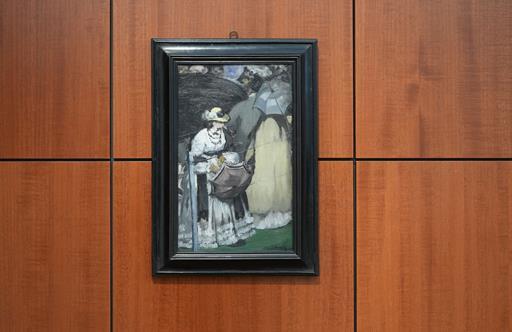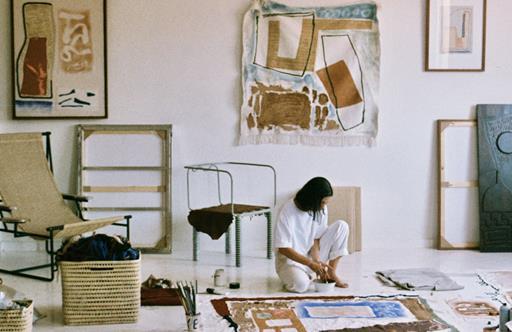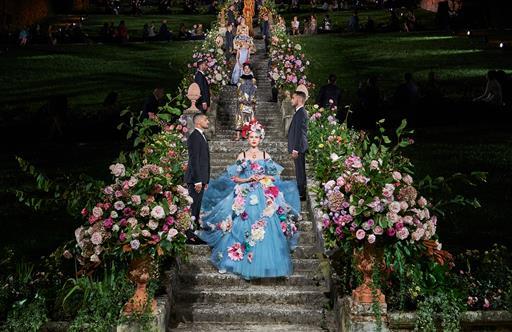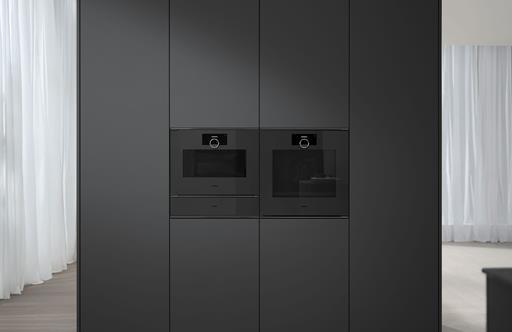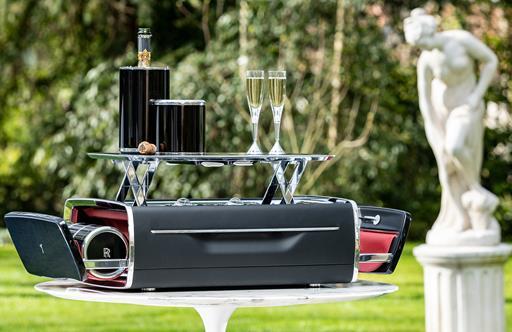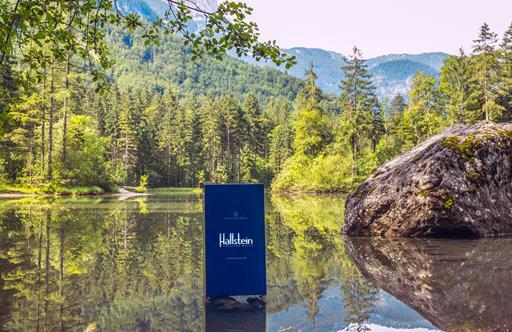Living in Luxury
A trio of very different but equally welcoming hostelries embody the Japanese hospitality scene

Contemporary architecture wrapped in snow-flecked forests; a traditional ryokan inn overlooking a lake in a hot-spring village; and an eco-conscious, nature-powered design hotel on a historic Kyoto lane.
Japan is nirvana for luxury accommodation. The range of places for bedding down may vary wildly, in terms of design and atmosphere as well as setting, yet there is one component that underpins them all: an unrivalled level of first-class hospitality, known as omotenashi in Japanese.
One example is Zaborin Ryokan, an escapist retreat among the forests and meadows that span a remote corner of Niseko, a paradise for powder ski lovers in winter, on the northern island Hokkaido.
Here, 15 clean-lined contemporary villas are home to walls of windows, local Hokkaido art, concrete details and - the icing on the snow-flecked cake - private hot spring onsen baths, both indoors and outside.
The experience is luxuriously complemented by log fireplaces, a tea room and a restaurant hosted by chef Yoshihiro Seno, who transforms seasonal Hokkaido produce into delicately crafted Japanese dishes.
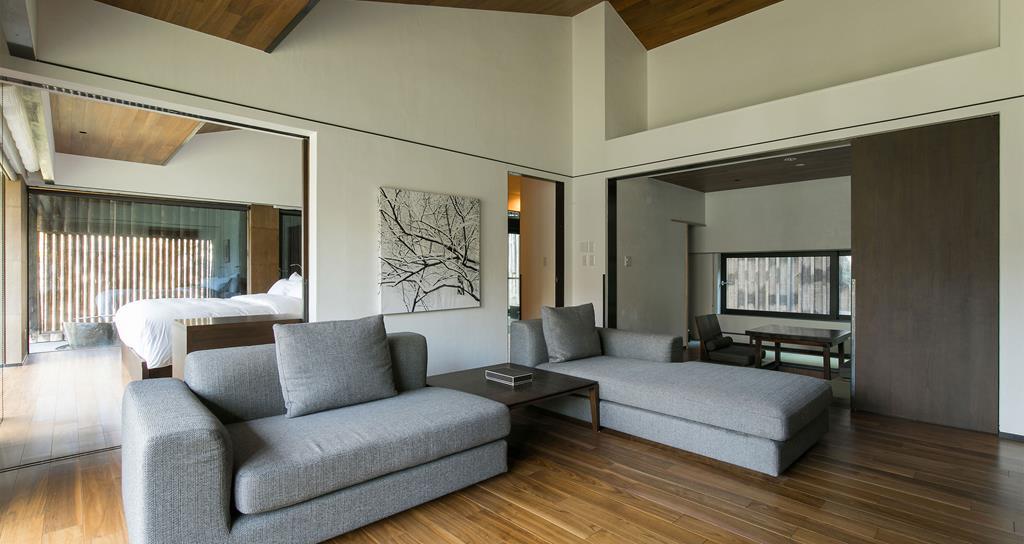
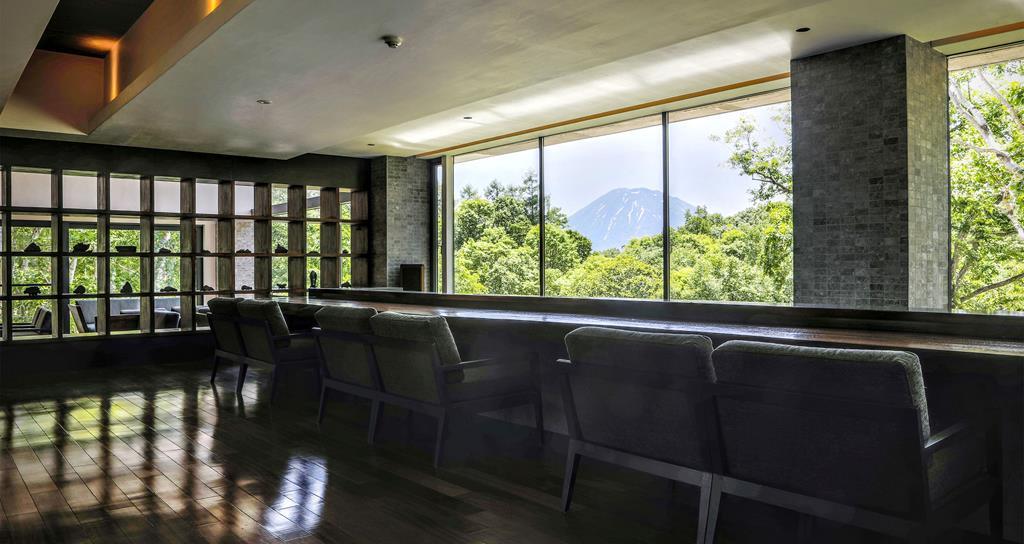
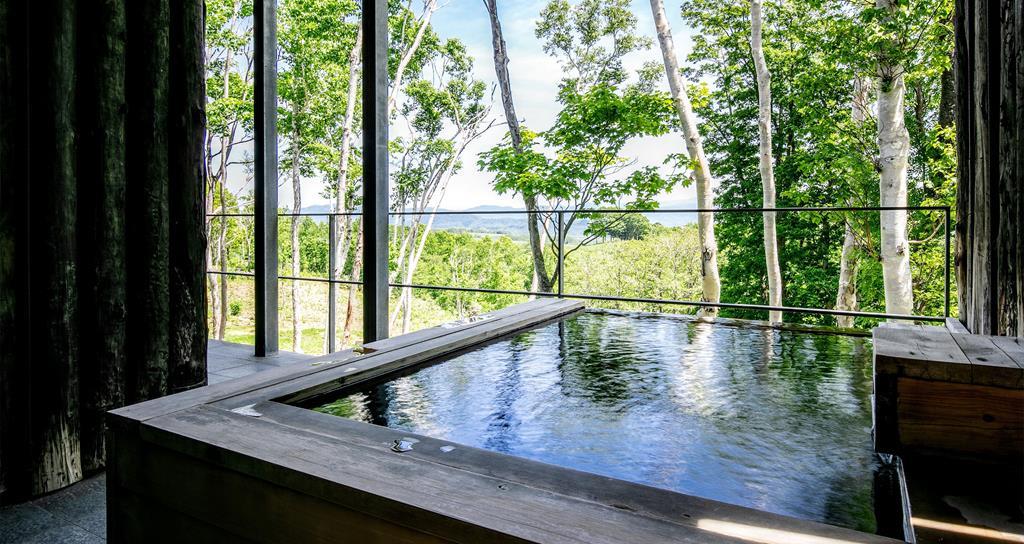
Zaborin Ryokan
A very different, but no less memorable, experience unfolds at Asaba, a centuries-old family-run ryokan, which smoothly fuses tradition with a creative modern edge.
The ryokan, whose roots date back to 1489, is housed in an exquisite traditional Japanese structure surrounded by bamboo forests in the atmospheric hot spring town Shuzenji, on Izu Peninsula, south of Tokyo.
Here, guests pass through an indigo split curtain and slip off shoes in the large stone genkan entrance before being ushered by kimono-clad staff to serene tatami mat guestrooms, where special seasonal meals are served privately and futons are unrolled nightly.
The scene-stealer, however, is the lake that fringes the rear of the property, complete with idyllic hot spring bathing, a floating wooden Noh stage and a cornucopia of trees and flowers.
Unusually for a traditional inn, the decor quietly fuses old and new – with tatami and paper screens sitting comfortably alongside modern touches such as a Lee Ufan painting, a Tatsuo Miyajima installation and Harry Bertoia diamond chairs on the terrace.
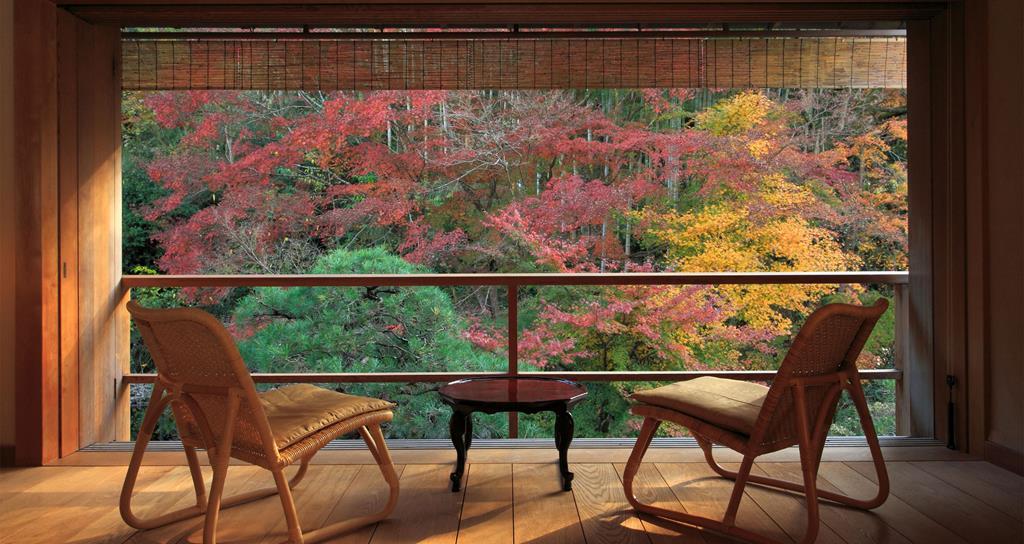
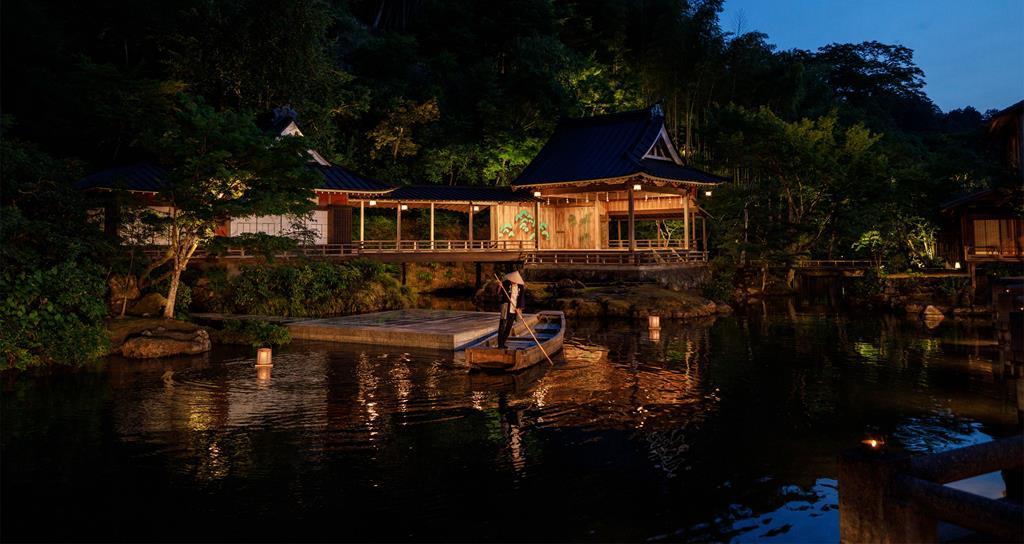
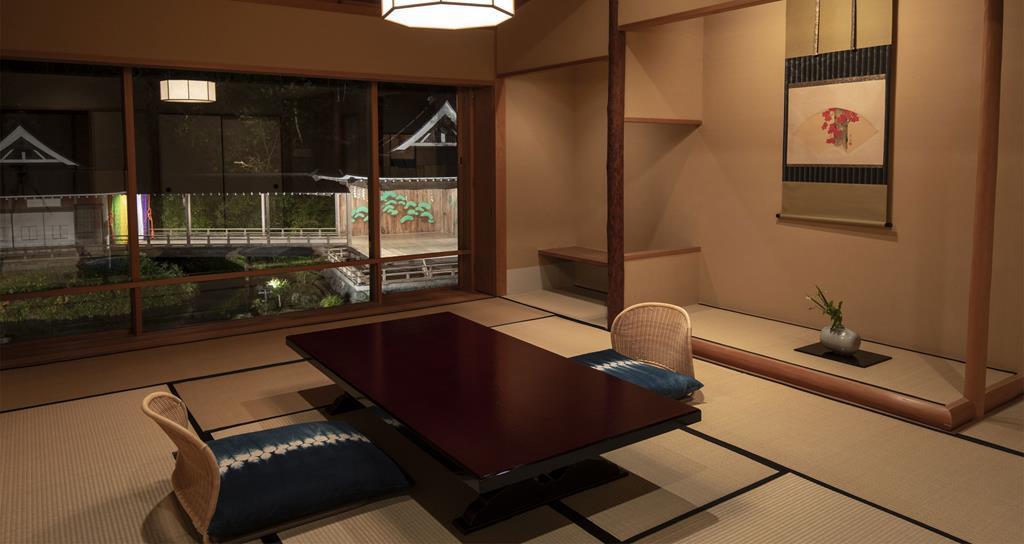
Asaba Ryokan
Kyoto is another haven for traditional ryokan with a unique contemporary twist - one being Sowaka Kyoto, set on a quiet lane in the historic Gion district.
The hotel spans a stylish renovation of the main building - a century-old historic wooden teahouse-style structure, with 11 guestrooms overlooking a central garden, complete with a scattering of modern design classics and abstract artworks among its old wood corridors and panel-framed rooms. It is also home to a newly built wing housing a further 12 guestrooms with minimalist lines, natural materials and views across the Kyoto skyline.
Its award-winning restaurant La Bombance Gion is a destination in its own right, with an array of haiku-inspiring visual dishes served in a space with dramatic black plaster walls and garden views.
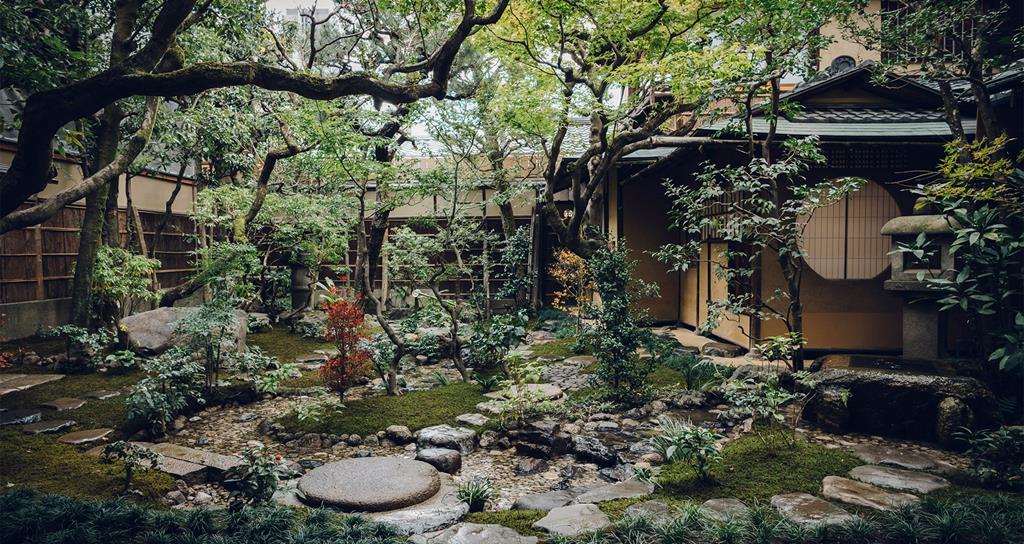
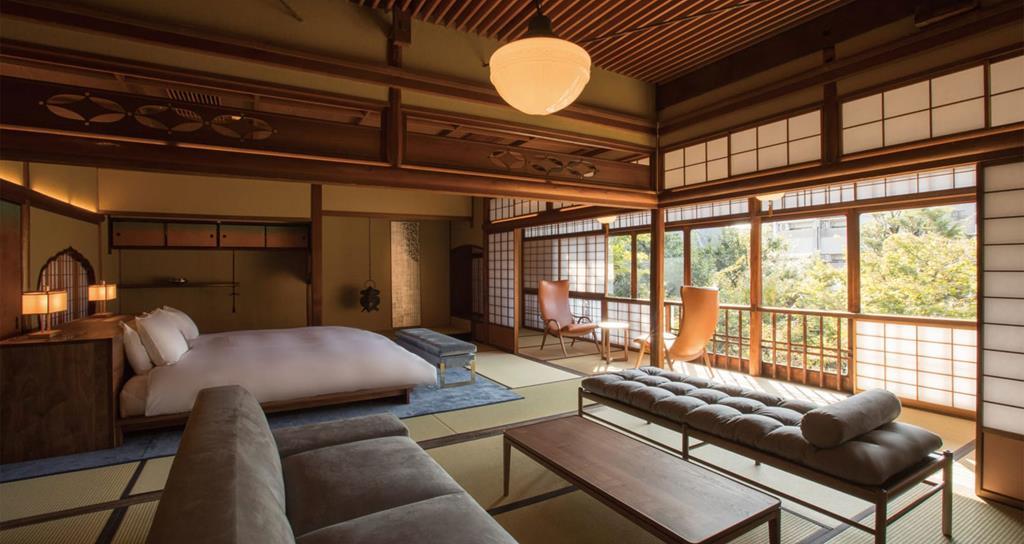
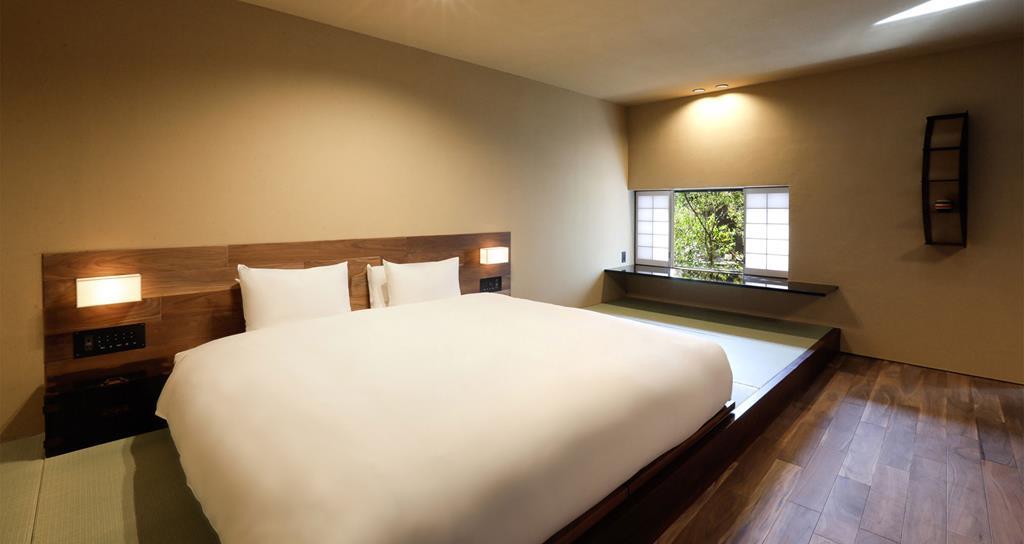
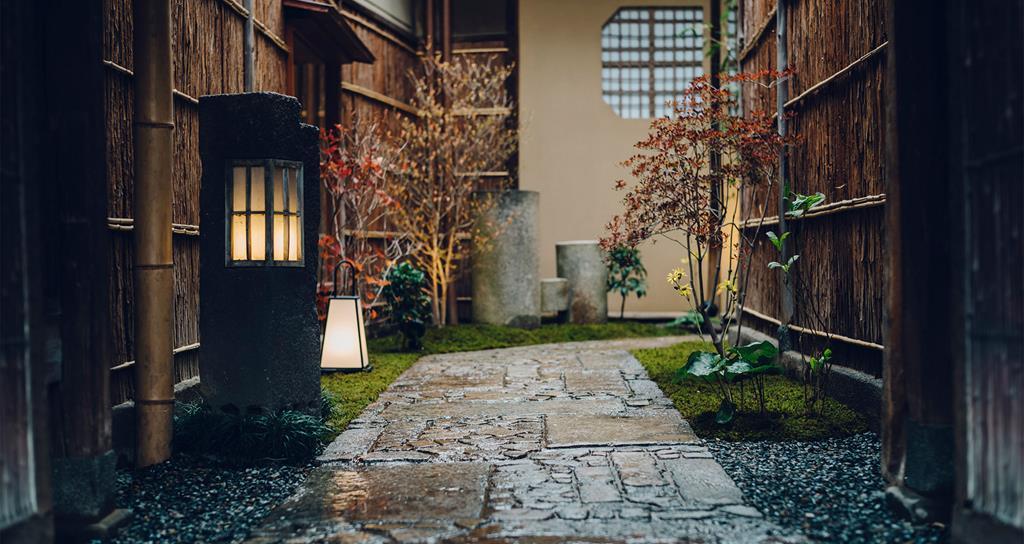
Sowaka Kyoto


